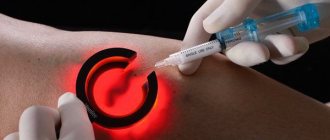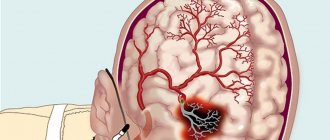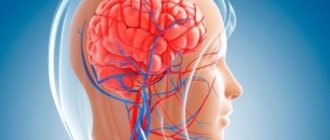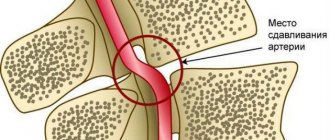Neurology Symptoms Services and prices Specialists Diseases
Dizziness is a state of the body characterized by a transient feeling of movement of one’s own body in space or objects relative to the person himself. This symptom is described as the appearance of rotation, because in fact the patient and the objects around him are in a stationary state.
Having consulted a doctor, a person often describes his sensations as “everything around is spinning” or “the earth is disappearing from under his feet.” Sometimes the patient complains of fatigue, weakness, anxiety, and unsteady gait. In such a situation, it is important to establish what is actually happening in the body and determine the reasons for what is happening. Classification of dizziness
Such ailment is divided into two types: vestibular or reliable and non-vestibular or imaginary. The vestibular type is considered as dizziness, the source of which is disorders in one or more parts of the vestibular apparatus. Non-vestibular occurs as a consequence of dysfunction of an organ, groups of organs and injuries. It also manifests itself as a consequence of psychological instability and nervous disorders.
Causes of dizziness
This is a common symptom that accompanies a lot of pathological conditions. Dizziness can be both the main manifestation of the disease and a secondary symptom of some diagnoses. Sometimes minor changes in the functioning of the body manifest themselves as such ailments. Often the source is vestibular deviations.
The probable root cause of dizziness is considered to be:
- pathologies of the vestibular analyzer;
- diseases of internal organs;
- diseases of the organ of vision;
- destructive changes in the cervical spine;
- cerebrovascular accidents;
- disorders of the physiological functions of the body.
Cerebrovascular insufficiency in the vertebrobasilar region
One of the common causes of dizziness is cerebral circulatory insufficiency in the vertebrobasilar circulation (VBB), which can occur in the form of chronic ischemia, transient cerebrovascular accidents or strokes.
Pathogenesis
The main causes of ischemic changes in this pathology are factors that limit blood flow into the vertebrobasilar system or promote excessive outflow from it to other vascular beds. The pathogenesis of cerebrovascular insufficiency in VBD can cover an extremely wide range of changes. Along with the pathology of the vessels of the vertebrobasilar system (stenosis and occlusion) due to atherosclerosis, extravasal factors are of great importance. For example, thrombosis of the vertebral artery is possible due to dissection of the artery due to whiplash or other neck injury, or inadequate manual manipulation of the cervical spine.
| Kimmerly Anomaly |
Other causes also include pathological tortuosity, congenital developmental disorders in the form of hypo- and aplasia of the vertebral artery, and Kimmerli's anomaly. If the latter is present, when turning the head, bending and compression of the vertebral artery occurs with its possible trauma.
Also, pathological conditions such as Klippel-Feil-Sprengel anomaly, nonfusion of the posterior arch of the atlas, saddle-shaped hyperplasia of the lateral masses of the atlas, underdevelopment of the articular processes of the cervical vertebrae, cervical ribs, “steal” syndrome ( subclavian-vertebral steal) and a number of others. In addition, blockage of blood vessels often occurs with a thrombus that has formed and migrated to the vertebral or basilar artery from the heart cavity.
It should be noted, however, that most of the listed factors are significant specifically for acute vascular catastrophe, manifested by dizziness - transient cerebrovascular accidents or strokes. Systemic dizziness (i.e., when a person has a feeling of falling, moving in space, which is accompanied by nausea and vomiting) with chronic cerebrovascular insufficiency never occurs, and non-systemic dizziness most often disguises anxiety, depression, orthostatic hypotension, metabolic disorders ( hypo-, hyperglycemia), drug dizziness, disturbances of attention, vision, etc., which require adequate diagnosis and treatment.
Clinical manifestations
The core of the clinical picture in transient disorders of cerebral circulation in the vertebrobasilar system are episodes of dizziness, often accompanied by nausea, vomiting, instability when walking and standing, noise, a feeling of fullness in the ears, autonomic disorders in the form of profuse sweating, tachycardia, pallor or, conversely, redness facial skin, lasting from several minutes to several hours. Hearing impairments (mostly decreased) and vision may also be observed (“spots” in front of the eyes, “blurred vision”, “blurred picture”). Extremely dramatic for patients are sudden falls without loss of consciousness (“drop attacks”, Unterharnscheidt syndrome), which are acute circulatory disorders in the reticular formation of the brain stem and usually occur with sudden turns or throwing back the head.
Strokes in the vertebrobasilar region are characterized by a rapid onset (no more than 5 minutes pass from the appearance of the first symptoms to their maximum development, usually less than 2 minutes), as well as the following neurological symptoms:
- motor disorders: weakness, clumsiness of movements or paralysis of the limbs;
- Sensory disorders: loss of sensation or paresthesia of the limbs and face;
- visual impairment in the form of double vision, loss of visual fields;
- imbalance, instability
- impaired swallowing and speech clarity.
A special form of acute cerebrovascular accident in the VBB is a “bowhunter’s stroke”, associated with mechanical compression of the vertebral artery at the level of the cervical spine with extreme rotation of the head to the side.
Mechanical compression of the vertebral artery at the level of the cervical spine, which underlies the development of “archer” stroke.
The mechanism of development of such a stroke is explained by the tension of the artery when turning the head, accompanied by tearing of the intima of the vessel (dissection), especially in patients with pathological changes in the arteries.
Diagnostics
When diagnosing cerebrovascular insufficiency in the VBD, it is necessary to take into account that the symptoms of the disease are often nonspecific and may be the result of another neurological or other pathology, which requires careful collection of patient complaints, study of the medical history, physical and instrumental examinations to identify the main cause of its development. The leading role in the diagnosis of clinically significant changes in blood flow in the vertebrobasilar region is currently played by neuroimaging methods of studying the brain (MRI and CT), as well as Doppler ultrasound and duplex scanning with color flow, which allow non-invasive and relatively cheap assessment of the structure and patency of the vascular bed.
It is important to note that the differential diagnosis between vertigo caused by damage to the cerebellum and/or brain stem (central) and that arising from dysfunction of the vestibular apparatus or vestibular nerve (peripheral) is not always simple. On the one hand, very often such conditions as benign paroxysmal positional vertigo are mistaken for a stroke, at the same time, sometimes patients with acute vascular insufficiency in the VBB are mistakenly treated for “cervical osteochondrosis with vestibulopathic syndrome” by chiropractors and osteopaths with the development of corresponding complications .
Treatment
In the case of an acute neurological deficit (alternating syndromes, cerebellar insufficiency, “negative” scotomas, etc.), the patient should be urgently hospitalized in a regional vascular center or neurological department to exclude a stroke in the VBB. If it is confirmed, treatment is carried out in accordance with currently relevant guidelines and recommendations.
For dizziness due to chronic cerebral circulatory failure, the VBB focuses on drugs that improve cerebral circulation due to vasodilating and rheopositive effects (vinpocetine, cinnarizine, betahistine, etc.). Adequate correction of blood pressure and prevention of thrombus formation in various heart rhythm disorders are of great importance.
← Back
Dizziness as a consequence of diseases of the internal organs
The appearance of such a symptom provokes the presence of diseases of the cardiovascular system or other organs in a person.
List of common pathologies whose symptoms include dizziness:
- abnormalities in heart rhythm;
- myocardial infarction;
- cardiomyopathy of various etiologies;
- dysfunction of the heart valves (heart defects);
- postural hypotension (a sharp drop in pressure when changing body position);
- excessive pulmonary ventilation due to nervous system disorders;
- anemia;
- diabetes;
- infection of the body;
- use of certain groups of drugs.
Dizziness as a manifestation of visual pathologies
The organ of vision indirectly maintains balance. Therefore, visual disturbances can cause dizziness.
Eye pathologies accompanying the development of an attack:
- deviation of the visual axis (squint);
- nystagmus (involuntary movements of the eyeball);
- glaucoma;
- cataract;
- weakened vision;
- astigmatism;
- diplopia (double image).
Poor cerebral circulation is a reason for dizziness
The human body is designed in such a way that in situations where the blood supply to the brain is disrupted, compensatory modes are triggered. They work to restore vital processes. In unfavorable circumstances, self-compensation is not possible.
There are several types of cerebrovascular dysfunction:
- Acute condition. Manifests itself in the form of an ischemic or hemorrhagic stroke and requires emergency medical attention.
- Acute transient in the form of a transient ischemic attack. In this situation, the body’s compensatory functions are sufficient for self-healing. The duration of the attack is a couple of minutes. Within 24 hours, the person returns to his original state, and his head stops spinning.
- A chronic condition in which the disease progresses slowly.
Physiological dizziness
Not in all cases, dizziness is a manifestation of the disease. Sometimes this is how the body reacts to stimuli. This condition is provoked by:
- A rapid movement in which the body sharply deviates from the horizontal: riding on a swing, jumping from a height.
- Anxiety, panic attacks, fright, during which excess amounts of stress hormones are released into the blood.
- Oxygen starvation, which occurs due to a lack of iron in the blood or for other reasons.
- Hyperventilation of the lungs.
- Hypoglycemia is exhaustion of the body due to a lack of glucose.
- Dizziness as a sign of pregnancy. The monthly physiological state of a woman during the premenstrual period or during menstruation.
- Menopausal syndrome.
Kinds
Dizziness is classified depending on symptoms, affected area, etc. Experts distinguish:
- systemic dizziness. With this type, the patient evaluates his sensations as rotation of objects, sometimes his own body. Quite often he is able to indicate the direction of rotation. This type of dizziness is characteristic of damage to neural connections and peripheral/central parts of the vestibular system, according to this it is divided into central, intermediate or peripheral.
Important: the systemic type has a more pronounced clinical picture.
- non-systemic (physiological) dizziness. A person feels instability or unreliability of the position, a pre-fainting state, and the onset of loss of consciousness. It is temporary, and therefore passes spontaneously as soon as the human body adapts to the environment. That is why it is not dangerous for the patient.
Dizziness associated with pathologies
Such diagnoses include:
- Diseases of the inner ear: labyrinthitis, vestibular neuritis, etc. Such conditions lead to disturbances in the conduction of auditory and vestibular signals to the part of the brain that is responsible for recognizing these impulses.
- A cervical hernia compresses blood vessels, preventing proper blood circulation.
- Hypoxia due to stroke, thrombosis or ischemia.
- Migraine and attacks of benign paroxysmal vertigo.
- Brain tumors.
TREATMENT OF BRAIN CIRCULATION DISORDERS IS AVAILABLE IN THE BRANCHES:
Treatment of cerebral circulatory disorders in the Primorsky region
Address: St. Petersburg , Primorsky district, st. Repisheva, 13
Treatment of cerebral circulatory disorders in the Petrograd region
Address: St. Petersburg , Petrogradsky district, st. Lenina, 5
Treatment of cerebral circulatory disorders in Vsevolozhsk
Address: Vsevolozhsk , Oktyabrsky Prospekt, 96 A
Situations that require immediate medical attention
If dizziness is aggravated by the following symptoms:
- Attacks of nausea and vomiting.
- Severe headache.
- Loss of consciousness.
- Rapid heartbeat, chest pain, trembling in the limbs, sweating, lack of full breath.
- A sharp loss of sensitivity. Weakness in half the body, face, arms or legs.
Such manifestations of the disease are highly likely to indicate an emergency condition and the need for urgent treatment.
Cost of treatment of cerebral circulatory disorders:
| Services list | Price in rubles | |
| Saint Petersburg | Vsevolozhsk | |
| Initial appointment with a 1st level neurologist | 1850 | 1700 |
| Repeated appointment with a 1st level neurologist | 1650 | 1500 |
| Initial appointment with a 2nd stage neurologist | 2100 | — |
| Repeated appointment with a 2nd stage neurologist | 1900 | — |
| Initial appointment with neurologist Kolyada A.A. | 3200 | — |
| Repeated appointment with neurologist Kolyada A.A. | 2900 | — |
| Initial appointment with a neurologist Eroshina E.S./Irishina Yu.A./Tsinzerling N.V. | 4000 | 4000 |
| Repeated appointment with a neurologist Eroshina E.S./Irishina Yu.A./Tsinzerling N.V. | 3500 | 3500 |
| Initial appointment with neurosurgeon A.I. Kholyavin | 3300 | — |
| Repeated appointment with neurosurgeon A.I. Kholyavin | 2900 | — |
| Neurologist's report for reference | 700 | 700 |
| MANIPULATION | ||
| Piriformis muscle block | 2000 | 2000 |
| Occipital nerve block | 1800 | 1800 |
| Carpal tunnel block | 2500 | 2500 |
| Block of the sacroiliac joints | 2700 | 2700 |
| Suprascapular nerve block | 1800 | 1800 |
| Botulinum therapy | 5300 | 5300 |
| Botulinum therapy for bruxism and chronic facial pain | 18000 | — |
| Infusion relief of acute back pain syndrome | 1750 | 1750 |
| Plasmolifting (1 procedure) | 3100 | 2800 |
| Transcranial polarization in Parkinson's disease (30 min) | 1800 | — |
| Pharmacopuncture | from 1500 | from 1500 |
| HEADACHE TREATMENT | ||
| Botulinum therapy for chronic migraine | 35000 25900 | 35000 25900 |
| Targeted treatment of migraine (1 session) | 17900 | 17900 |
Diagnosis of dizziness
To get a diagnosis, see a doctor. The profile of the specialist has been discussed above. In such situations, health workers act by elimination, so you will need to do a number of studies:
- Ultrasound of the great vessels of the head and neck;
- examination by an ophthalmologist;
- ENT examination, audiogram if necessary;
- X-ray, CT or MRI of the spine and brain (the specific diagnostic procedure is recommended by the doctor);
- laboratory tests (tests).
Treatment is prescribed only based on the results of a comprehensive examination.
A condition in which dizziness is a common occurrence. You should not ignore the problem or tolerate it. Dizziness is not uncommon as a sign of serious health problems. Timely measures are the key to a successful resolution of the situation. If the examination does not reveal any organic pathologies, maintenance therapy will be prescribed.
Treatment methods
The treatment process begins with diagnosis and analysis of the information obtained. The vestibular apparatus and brain are studied, the location of the problem and its stage are determined.
Important: interviewing a patient complaining of a particular health condition is essential.
The examination includes:
- X-ray or magnetic resonance imaging of the cervical spine (detection of osteochondrosis, displacement of the vertebrae);
- instrumental study of the brain (detection of tumors);
- electroencephalography to determine brain activity;
- study of the vestibular apparatus (rotational tests, vestibulometry);
- determination of nystagmus and movement coordination.
- Subsequent treatment is classified into:
- medicinal;
- physiotherapy;
- vestibular correction;
- manual therapy;
- reflexology.
In addition, experts recommend:
- daily monitoring of blood pressure (if it is exceeded, taking tablet medications is indicated);
- limited salt intake to prevent edema (if edema does appear, diuretics are prescribed);
- dosed sports activities, including special exercises to restore coordination of movement.
Treatment of dizziness
Diagnoses vary. And while some conditions can be treated conservatively, others require emergency or planned surgical intervention.
Conservative treatment is prescribed by a specialist who deals with the problem indicated by laboratory and instrumental studies.
Dizziness is not an independent diagnosis, but a manifestation of an underlying disease. Therefore, symptomatic and etiotropic treatment will be required, aimed at eliminating both the cause of the disease and its consequences. The first thing they do is try to influence the symptom that brought the patient to the walls of the medical facility: do everything to stop the dizziness. Then they delve into the original source, affecting the epicenter of the disease.
The doctor will select the necessary medications and procedures, and at the same time give recommendations on physical activity, nutrition, etc. Treatment methods are aimed not only at stabilizing the patient’s condition, but also at long-term prevention of relapses of dizziness attacks.
The effectiveness of treatment depends on the timeliness of diagnosis, the qualifications of the attending physician and the patient’s responsible attitude to the recommendations received. Take care of yourself and be healthy!
Diagnostics
An experienced neurologist can suspect and, in some cases, diagnose the condition based on the patient’s complaints. Additional examination methods help to identify the final cause:
- Dopplerography of the carotid artery (assessment of possible narrowing due to the atherosclerotic process).
- CT scan
- MRI
- EEG
- Clinical and biochemical blood test
! The earlier and more correctly the diagnosis is made, the more favorable the prognosis will be. !







